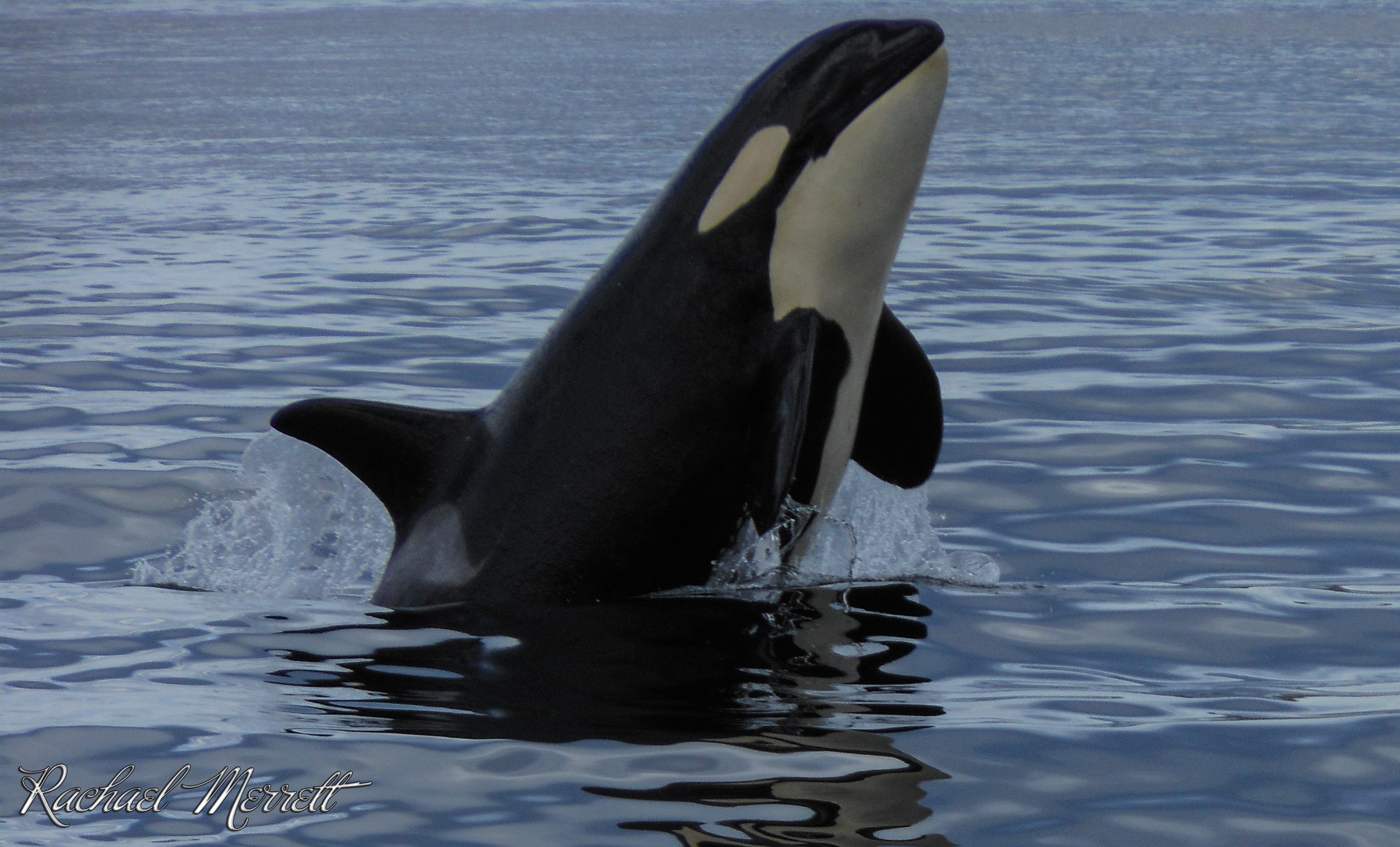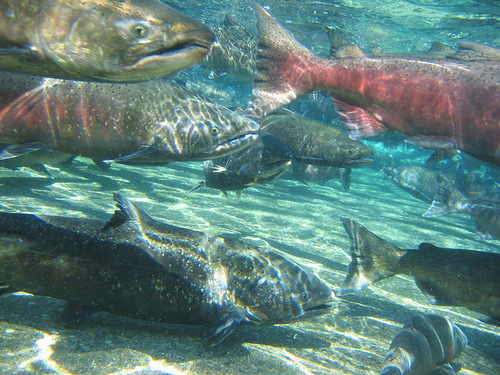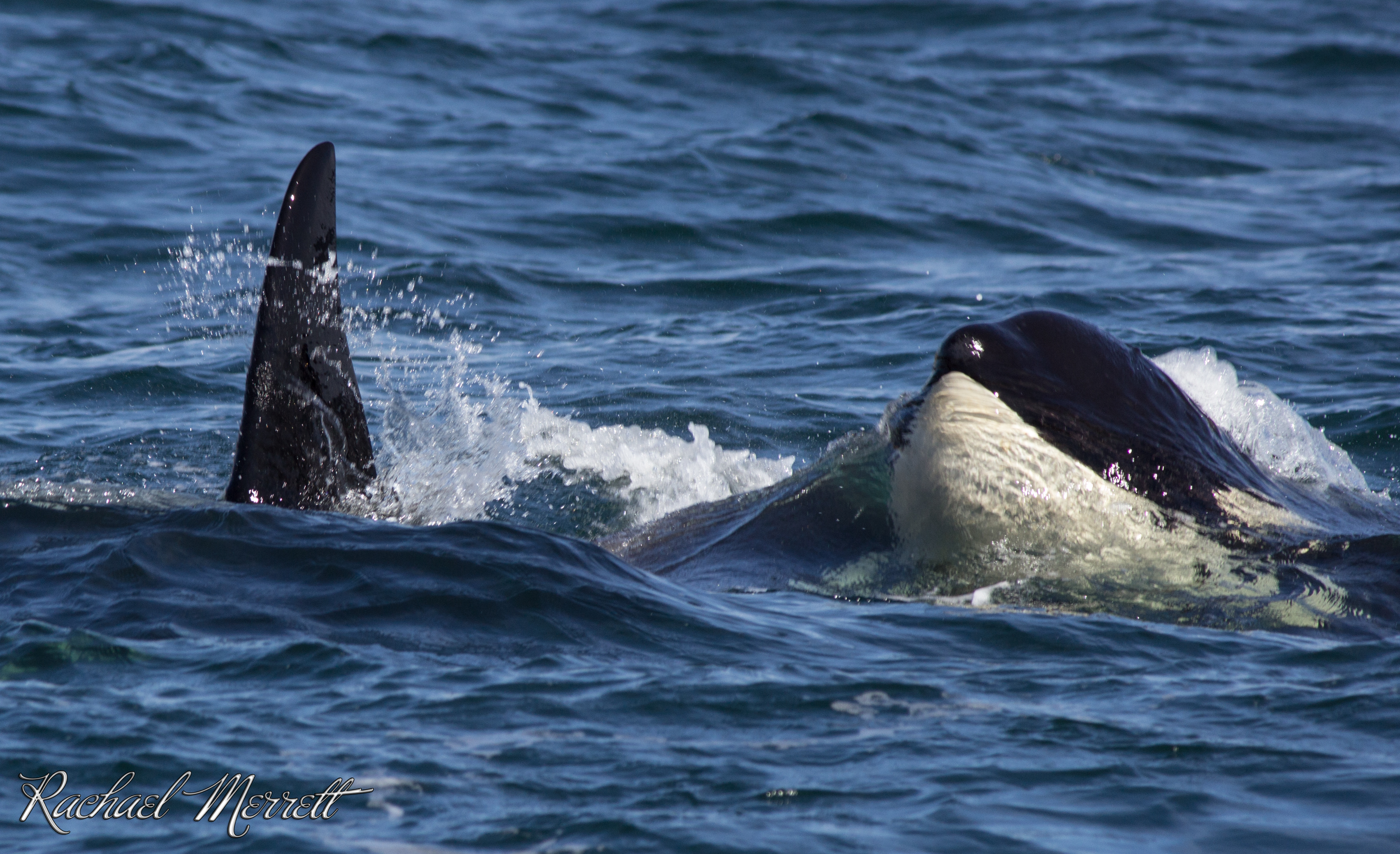
photo: Rachael Merrett
Wherever you look in whatever city you live on the Pacific coast, orcas have become a symbol of who we are and represent the beauty of our waters and the spirit of those who live there. From statues on the streets, to wood carvings sold at the markets, to the symbol for the City of Victoria and the logo of Vancouver’s NHL team. In BC, the symbol of the orca shows we have deep connections with killer whales.
We have so much passion for this iconic species, yet we’re watching as the population of orcas are struggling to survive before our very eyes. Statues, paintings and pictures are beautiful, but can’t be the only way we want to retain and experience the magic of orcas. Last year, we lost seven southern residents, which does not include several reports of calves who were stillborn or who died shortly after birth. We are walking on a knife’s edge when it comes to the reality of extinction of this genetically unique family in the next few decades.

photo: Pacific Northwest National Laboratory
The diet of southern resident killer whales is one key threat we have to address to see this species recover. The orcas’ diet consist of approximately 80% Chinook salmon. The average adult needs to eat around 385 pounds of salmon a day to stay healthy, traveling up to 100 miles every 24 hours to find enough food. Unfortunately, there isn’t always sufficient salmon to sustain the 78 whales that are left in this population.
In the past, many local rivers in both British Columbia and Washington state supported millions of spawning Chinook salmon each year, however, today many populations of Chinook are now extinct in the Pacific Northwest. A large percentage of the ones that remain are in serious trouble. Many local Chinook populations are at 5-10% of their historical numbers, and trends are not improving.
We won’t see the orca population recover if the whales don’t have enough food to eat.
How did this happen? The reasons for the declines in salmon are many; most were preventable and there are definitely solutions if there is a will to take action.
Decades of overfishing both Chinook salmon and the fish the salmon eat, like herring, sandlance, sardines, eulachon, and other species of juvenile salmon, has dramatically reduced their numbers. Another massive impact on salmon are the 1,000+ dams that have been built between Canada and the US on the river systems that supported spawning Chinook. Yet many of these dams are no longer in use for power generation but are still impact the salmon. Pair this with forestry practices that include clear-cutting to the edge of rivers—which has resulted in increasing water temperatures and sediment loads choking salmon eggs —and the impact on Chinook has been dramatic, which in the end sees the orcas with less food to eat.

photo: Rachael Merrett
The good news is that today we have a choice.
We either sit idle and watch this community of whales fade away or we stand up and take action for their survival. The federal government’s Final Action Plan for the southern residents was released in March 2017, but it is lacking in urgency, timelines and clear action. We collectively need to keep the pressure on the government to invest more time, money and resources into rebuilding Chinook salmon populations. Orcas do not have time to wait for action; they need changes to start now.
We may not know the exact details about orcas and their relationship with prey, but we do know they rely on Chinook and they need lots of it. We know that right now there aren’t enough fish and we have to start rebuilding salmon stocks immediately. The choice is clear: extinction or recovery.
The fate of orcas is up to us to decide. Let’s choose action. Let’s choose recovery.
Join us this month as we celebrate the iconic southern resident orcas. Though there are threats to this species we must address, we must also celebrate the beauty of the whales we still have. Throughout the month of June, we will be sharing stories and information to help increase awareness about the orca and the threats they face.

I am proud to personally know people out in Victoria who are passionate about the lives of these beautiful species who do so much to keep the life we know in balance. We first need educated so that we then know how to proceed in making things better in this world. Thank you for this article.
True
The most important thing we can do see more salmon is to quit this ridiculous harvesting of herring for their roe . And quit fishing Krill!!! The krill is the feed for every thing in the food chain in the ocean and Herring that used to be abundant 30 years ago in the inner waters and even up in the Charlettes are few and far between . compared to days gone by. The only thing that is responsible is over fishing by the commercial fleet for roe herring. Think of Atlantic cod. You want Orcas , STOP the roe fishery
I think this is a good and true article about orcas and salmon
Thank you!
Ken is right on target with his comment above. The critical food chain that needs to be understood is that without herring, there will be no salmon and without abundant salmon our Orca are doomed. The largest fleet of Herring ships BC is owned by Canfisco who harvest over 100 million pounds of fish products every year!
Canfisco is owned by Billionaire Jimmy Pattison, who has profited from his many BC based businesses and should care deeply about the environmental legacy he will leave behind in terms of sustainability. There is nothing sustainable about the herring roe catch that Canfisco are involved with every season which has already had a major negative impact on our wild fish stocks and by default the undernourishment of our Orca. Please Mr Pattison (and others) stop roe fishery!